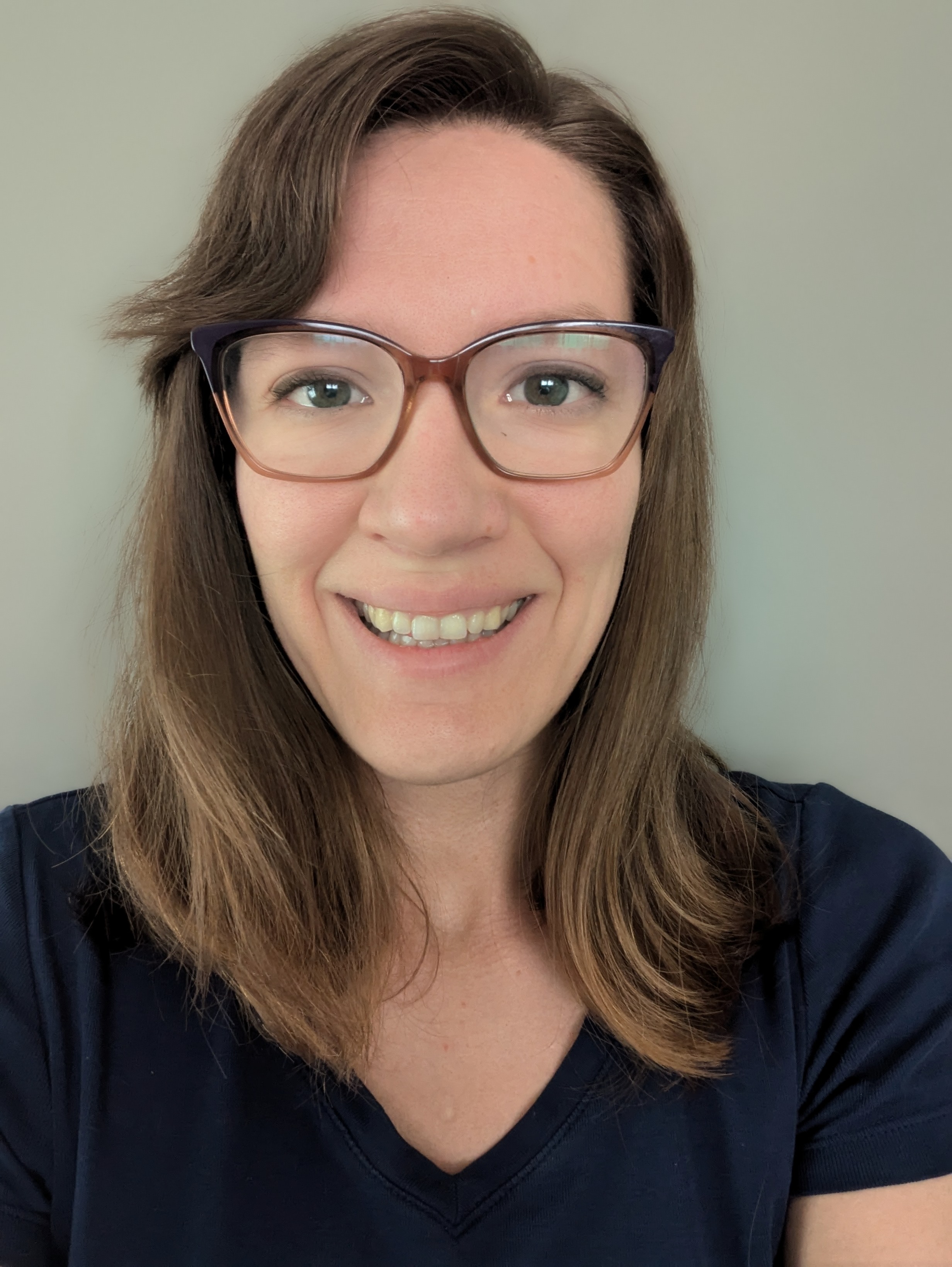Meet Jessie
A speech-language pathologist (SLP)
Name: Jessie Stavrou
Clinical Setting: Outpatient Neuro-Rehab

A speech-language pathologist (SLP)
Name: Jessie Stavrou
Clinical Setting: Outpatient Neuro-Rehab
“I’m grateful we didn’t wait to try AAC. I think it minimized [my patient’s] frustration and even improved her verbal speech, while getting all her needs met in the moment. She’s been seizure-free now for six weeks. All of her health outcomes have improved, too.
We’ve increased safety, we’ve increased participation, and we’ve even reduced caregiver burden. Those are the things I write in my evaluation [as goals] — and the device did it.”
When speech-language pathologist Jessie Stavrou first met Debra*, her nonfluent expressive aphasia was so severe that she struggled to speak single words or use gestures accurately.
This left Debra’s husband, Don*, attempting to guess her needs. It was growing exhausting — and dangerous — for both of them.
Their daily routines were constantly derailed by miscommunications — like the one evening when Debra wanted a blanket but kept pointing at the TV instead.
And even worse, Debra had been experiencing frequent seizures and pain for months post-stroke. But because she couldn’t communicate, her medical team struggled to control her symptoms.
As soon as they met, Jessie knew that Debra needed a functional method of communication ASAP.
But because Debra’s stroke happened only ~3 months prior, Jessie was unsure about introducing high-tech AAC instead of focusing on traditional speech therapy. She worried that Debra and her husband would think she was “giving up” on speech and language rehabilitation.
That’s when Jessie reached out to Lingraphica to discuss Debra’s case with Clinical Consultant Abby Ridgeway, M.S., CCC-SLP.
“I actually reached out to Abby to pick her brain: like, do we wait…or do we try AAC now? And Abby [pointed out that] we don’t want to deny people the opportunity to functionally communicate for any length of time.”
Within a week, Jessie had a pre-customized Lingraphica AAC device in her office — and asked Abby to join her next session to introduce the device to Debra and Don.
“To have another SLP come in and be able to just focus solely on the device, on answering the family’s questions, and problem-solving things within the device is a really nice thing.”
Debra and Don were thrilled about the device as soon as they tried it. Don quickly began customizing the device with pictures of family members, friends, and Debra’s favorite TV shows after their first AAC session.
At her next doctor’s appointment, Debra could communicate her symptoms using her AAC device. Her team adjusted her medication regimen — and she’s been pain and seizure-free since!
A few weeks later, Jessie’s department manager called her into her office — and she was crying.
Unbeknownst to Jessie, her manager had been friends with Debra for years before her stroke. She had run into Debra and Don as they were exiting the clinic…and grew emotional over the progress her friend had made.
“[My manager] told me that she was able to communicate with Debra and participate in a conversation! It was on topic, correct, intelligible — because she’d been practicing. I feel like the device made that possible, because she was able to get her basic needs met and now can use her energy to doing more novel things.”
Besides improvement in her language recovery (which early introduction of AAC is shown to help with), Jessie also recognized positive changes in Debra’s ability to advocate for herself and her needs.
“Now, she’s an agent in what they do day-to–day. She can pick where they’re going and state what she wants. So, he says, “Alright, we’re going out to eat. Where do you want to go?” and she can pick the restaurant. He doesn’t have to. Early adoption of the device can help with the burnout that caregivers get.”
Jessie shared that Debra even had one moment when she followed her husband around the house, requesting “fried chicken” using her device until he took her out to get her some!
Although Jessie knows that Debra still has a long road of speech and language therapy ahead of her, she now feels very confident in the positive, life-changing impact that early AAC implementation has had on both Debra and her husband.
And when we asked Jessie what advice she’d give to other SLPs who weren’t sure about trying AAC, she shared this:
“A trial is just that: a trial. If it doesn’t work for the patient, you can try something else. But you won’t know if AAC is a good fit if you wait. For this patient specifically, I’m grateful we didn’t wait.”
*Patient name has been changed to protect privacy.

Lingraphica offers free one-on-one consultations for SLPs who have someone on caseload who might be a good fit for an AAC device but aren’t entirely sure where to start. Call us at 888-274-2742 or visit the link below to get started.


Notifications